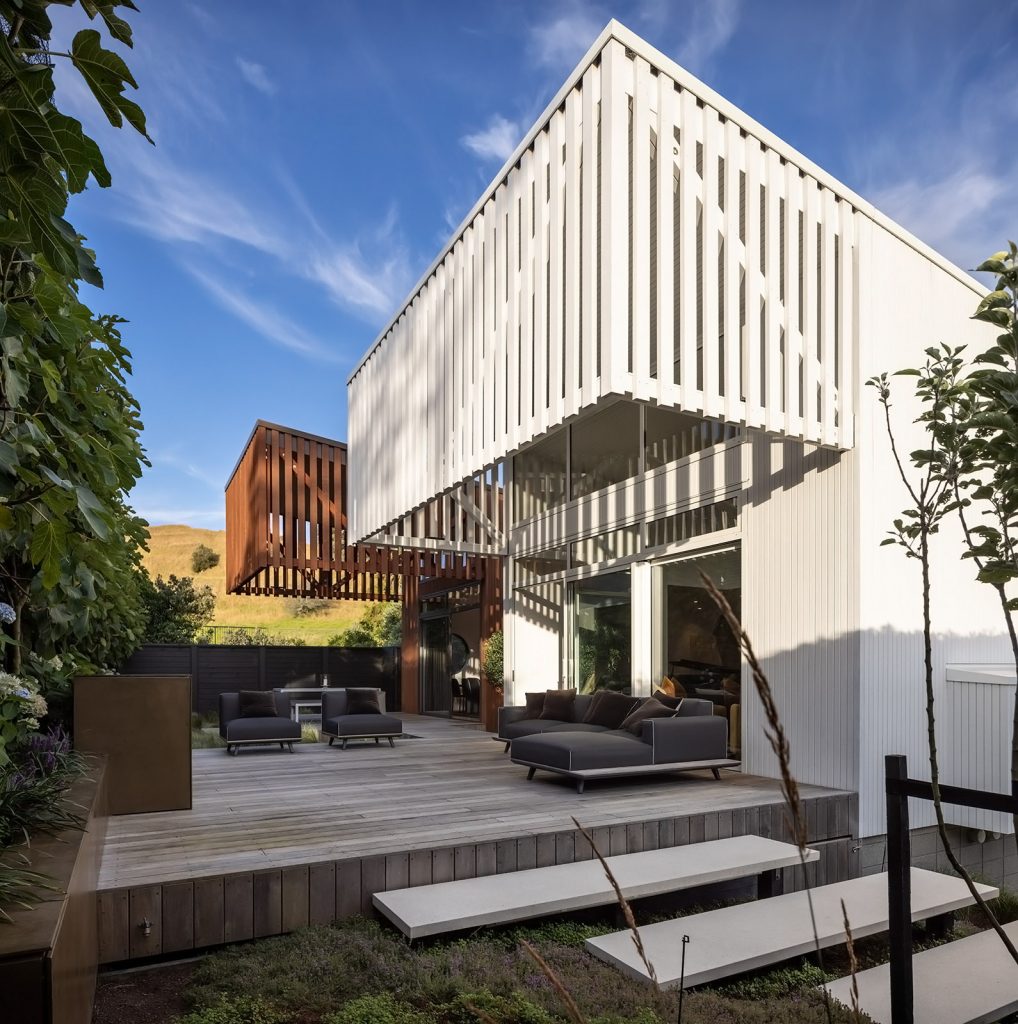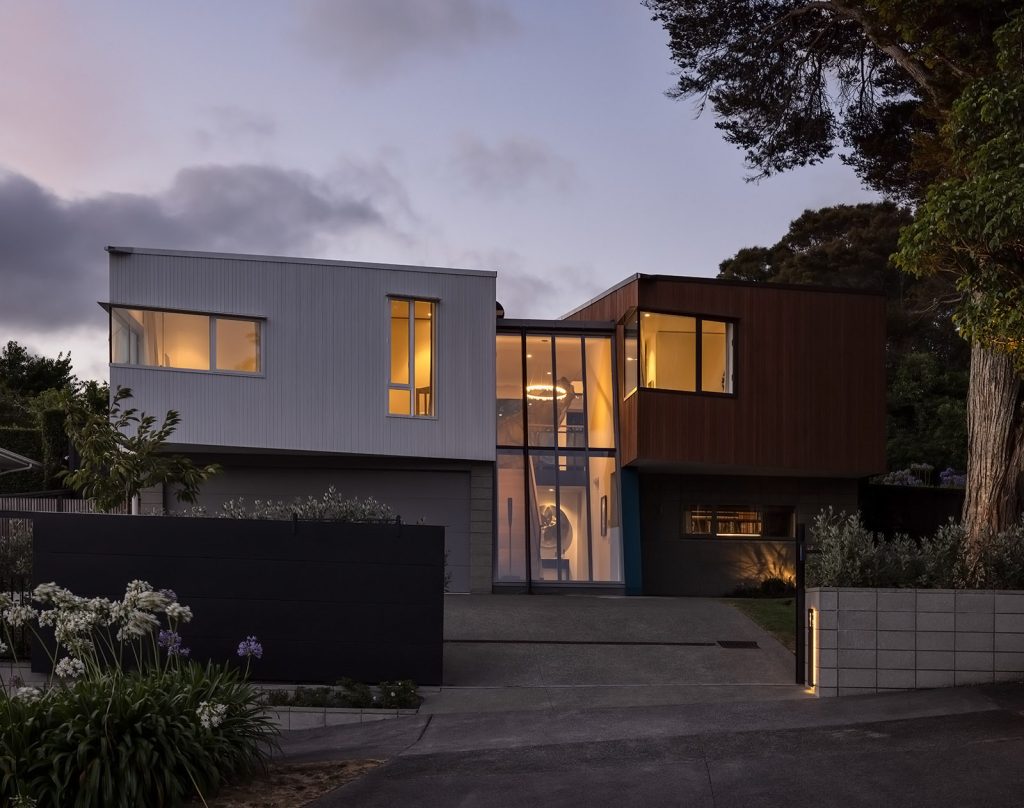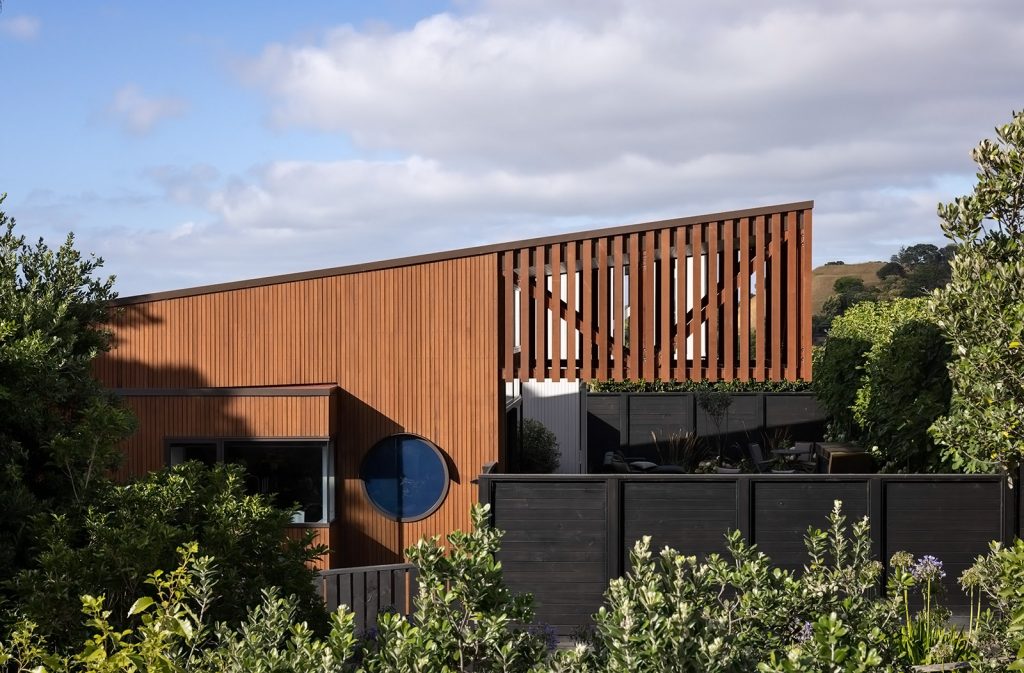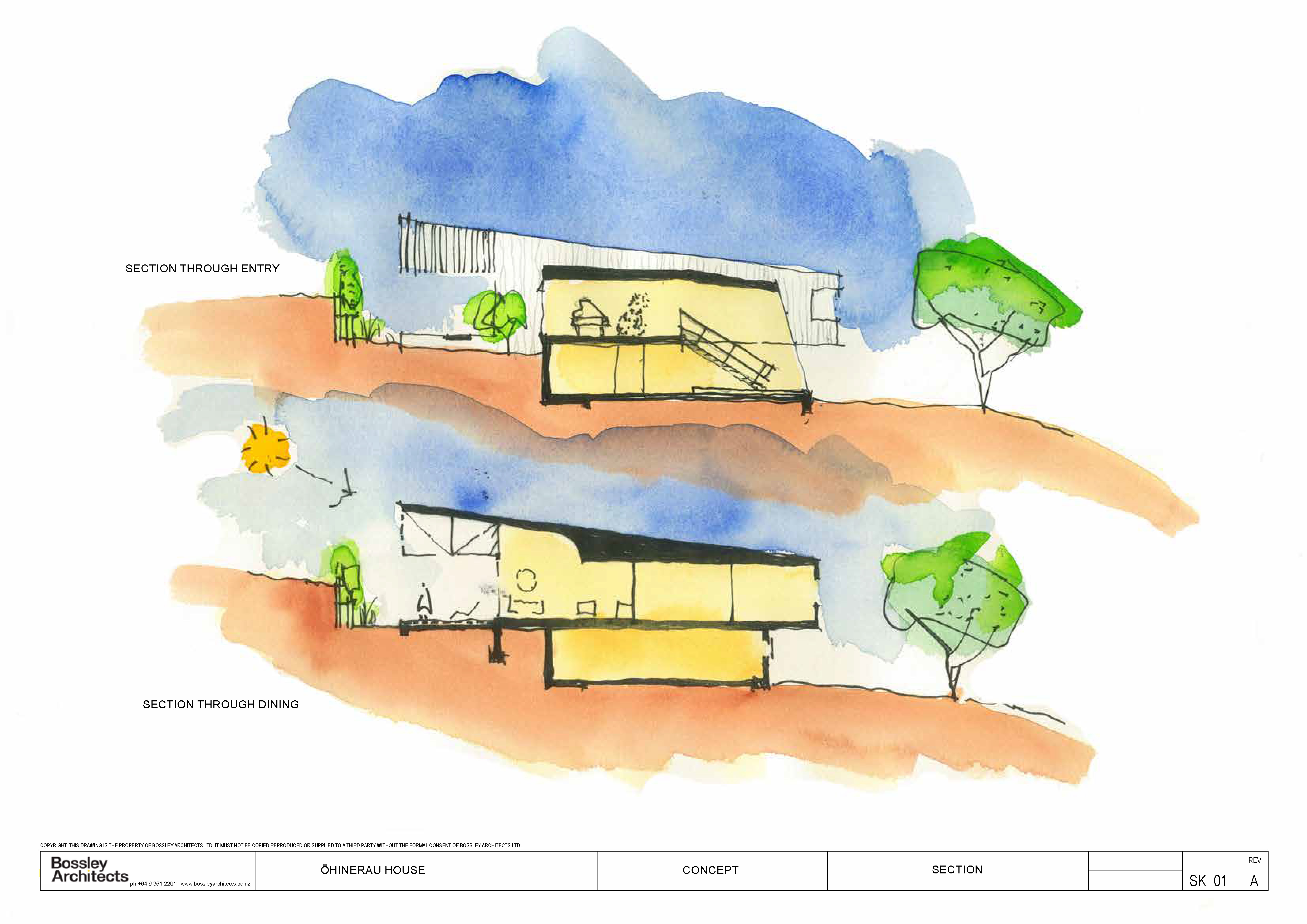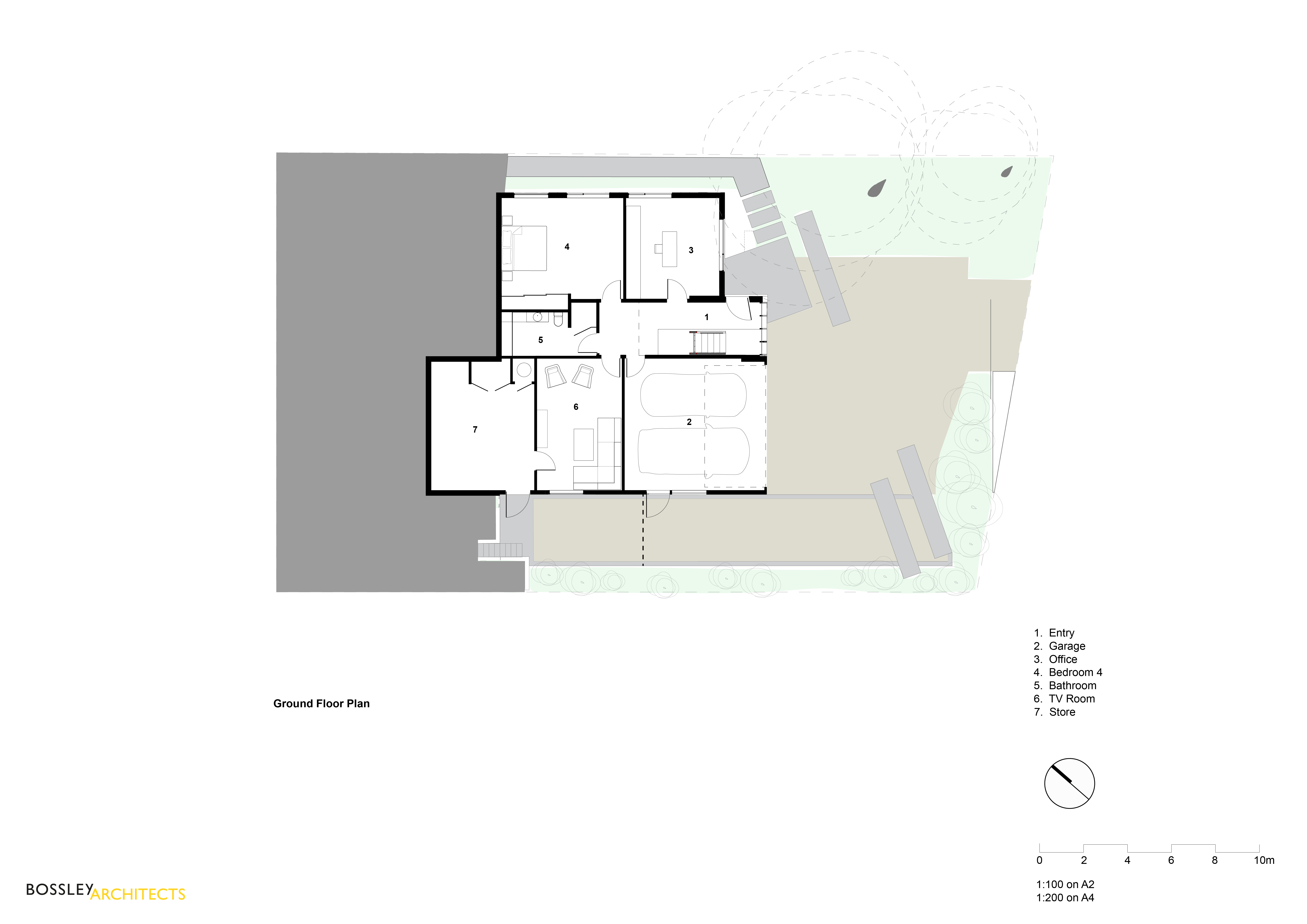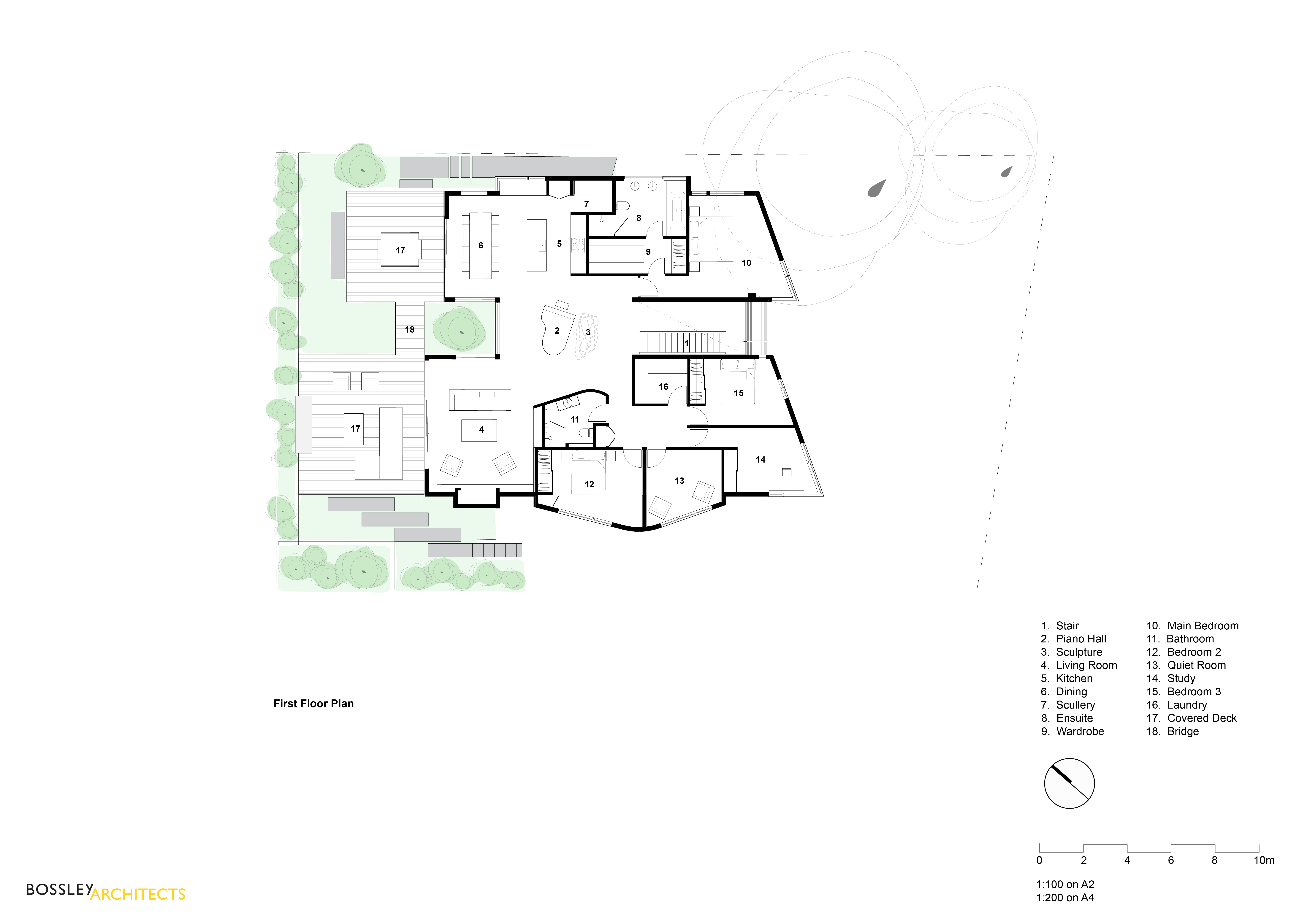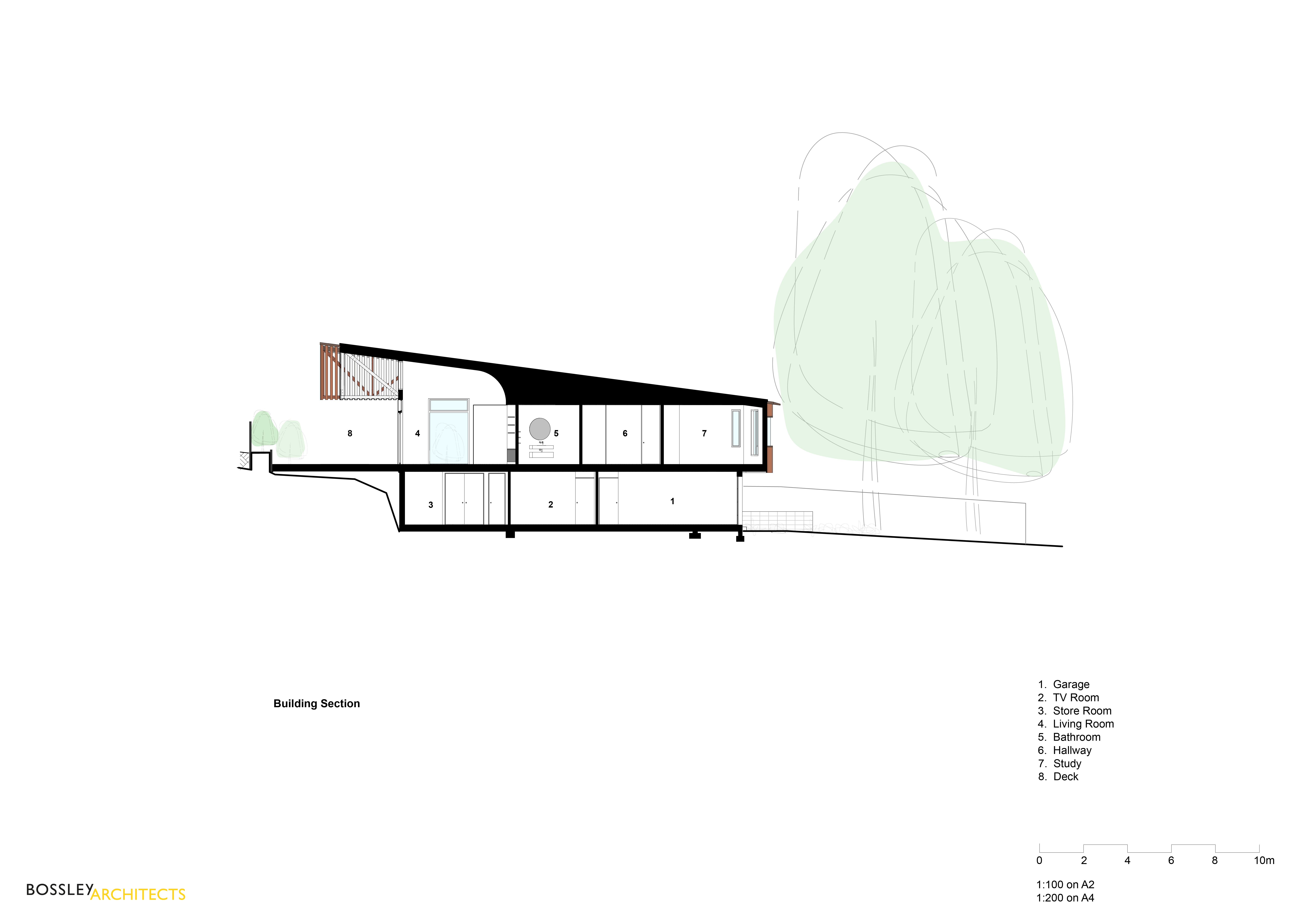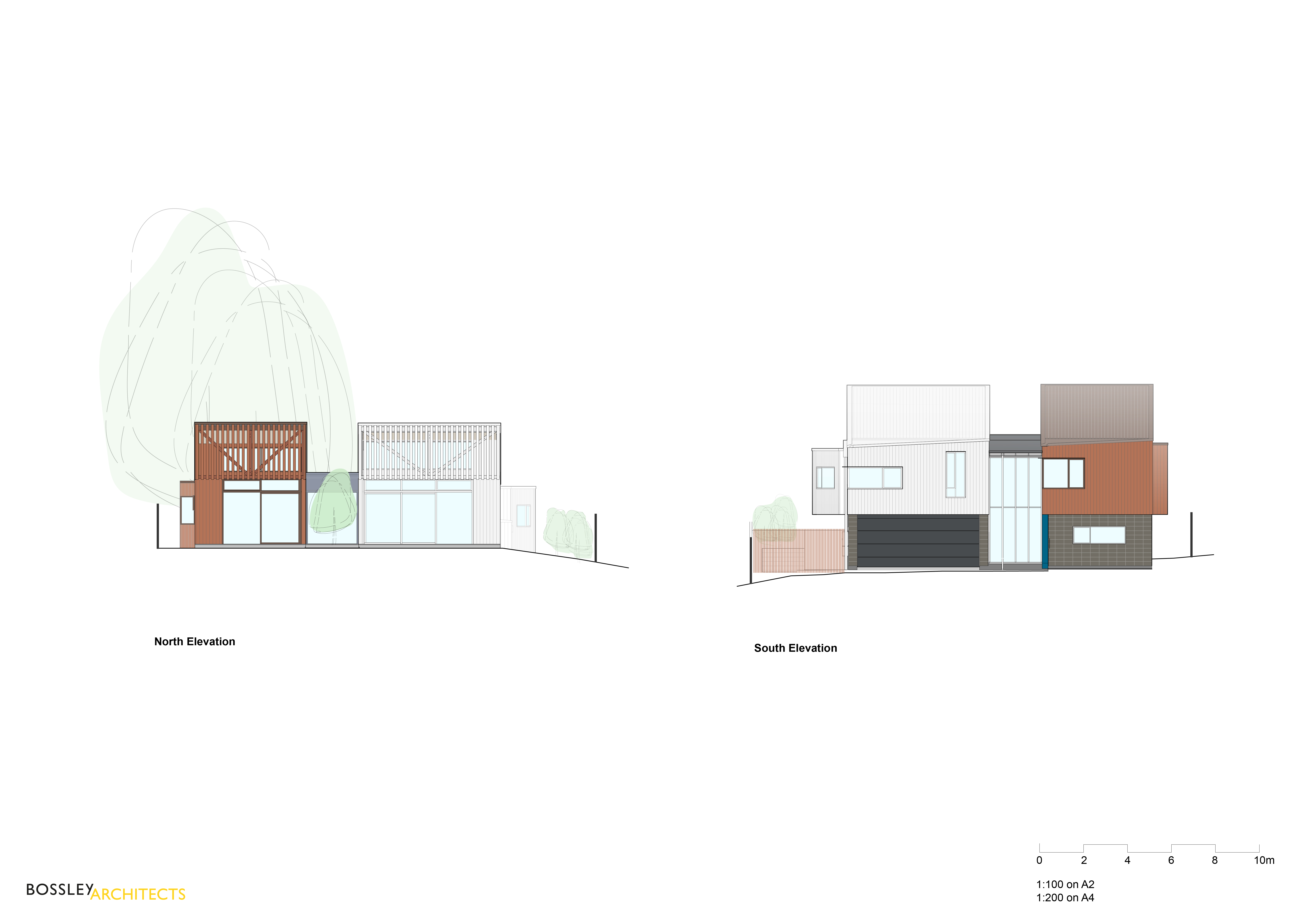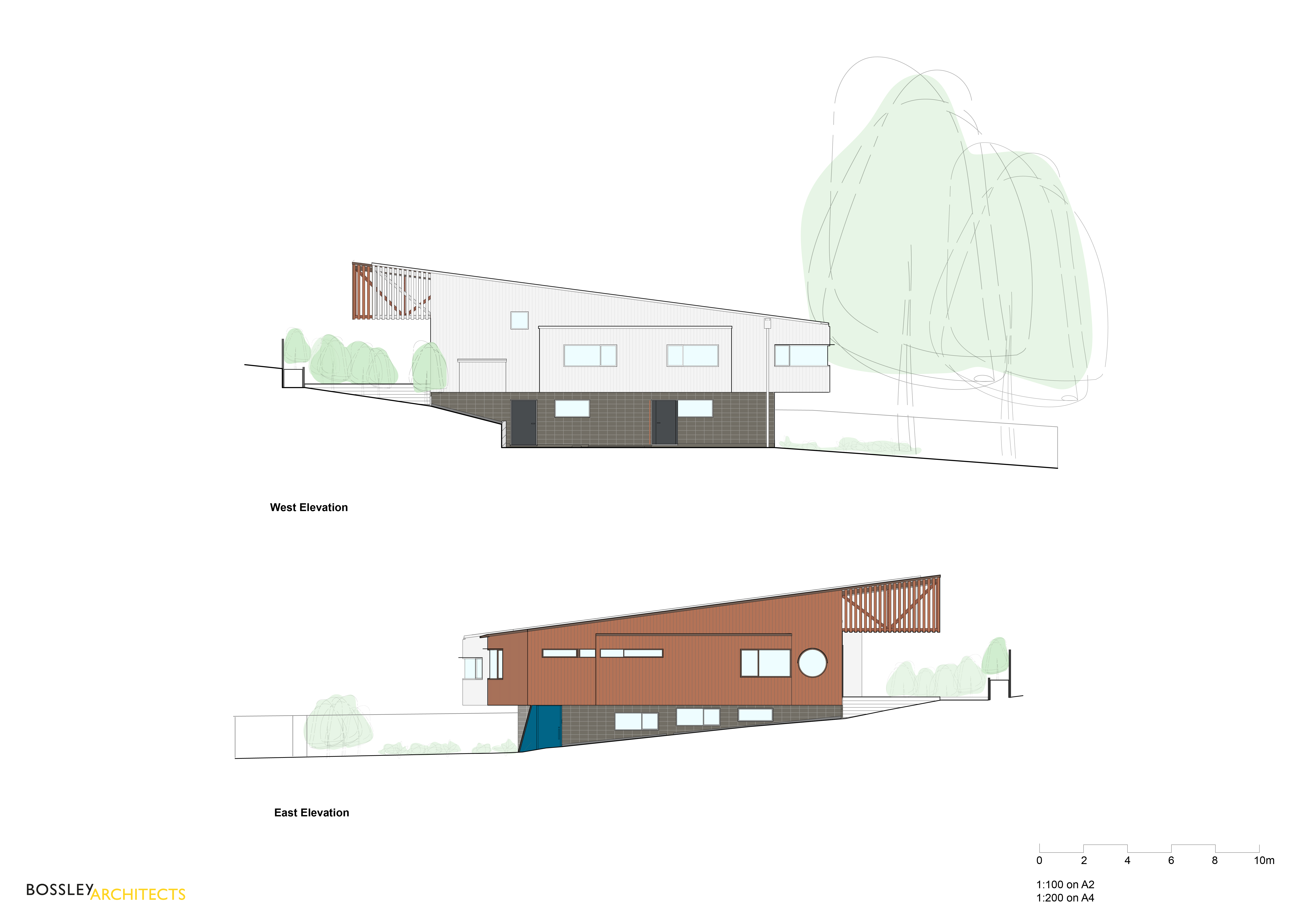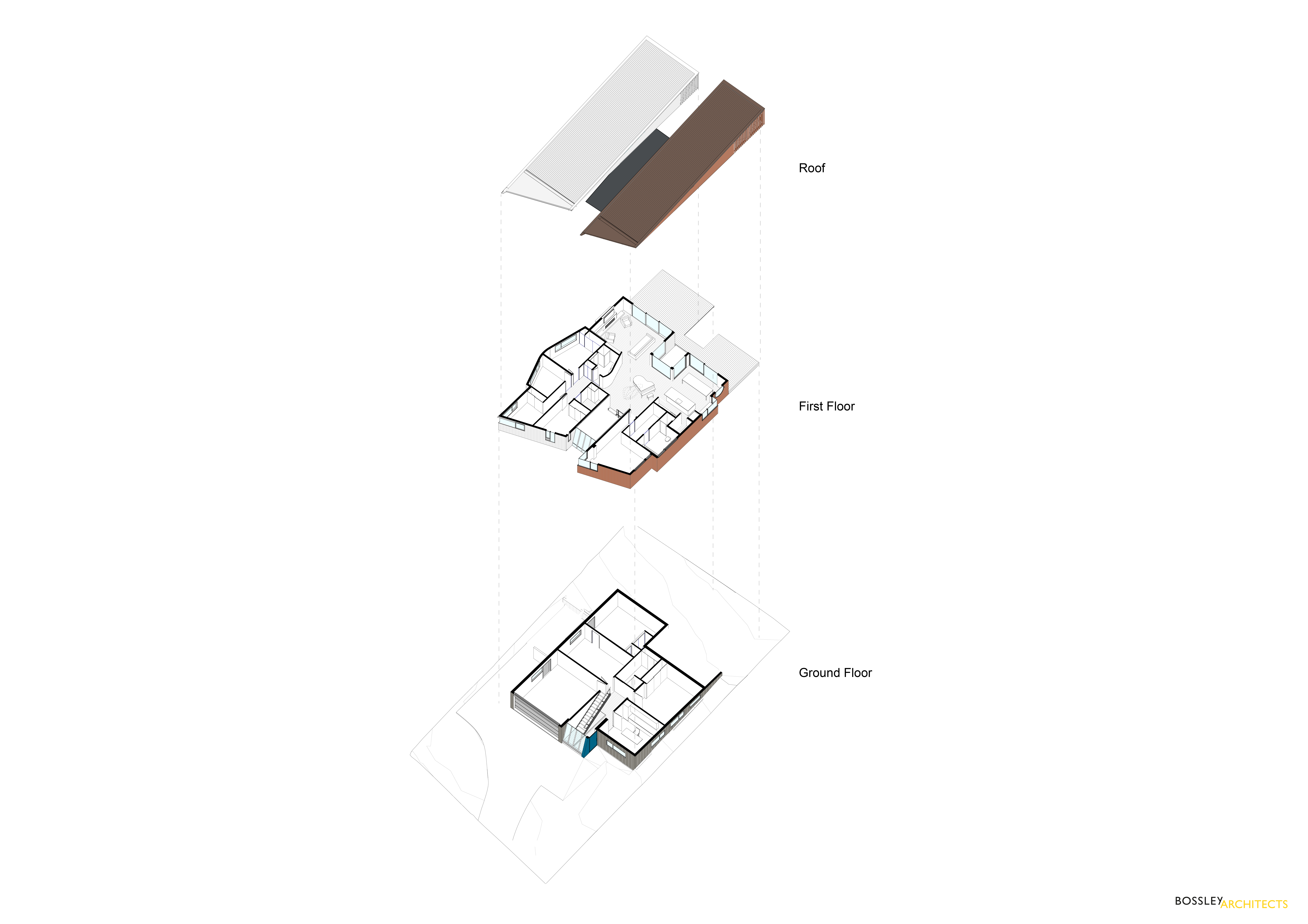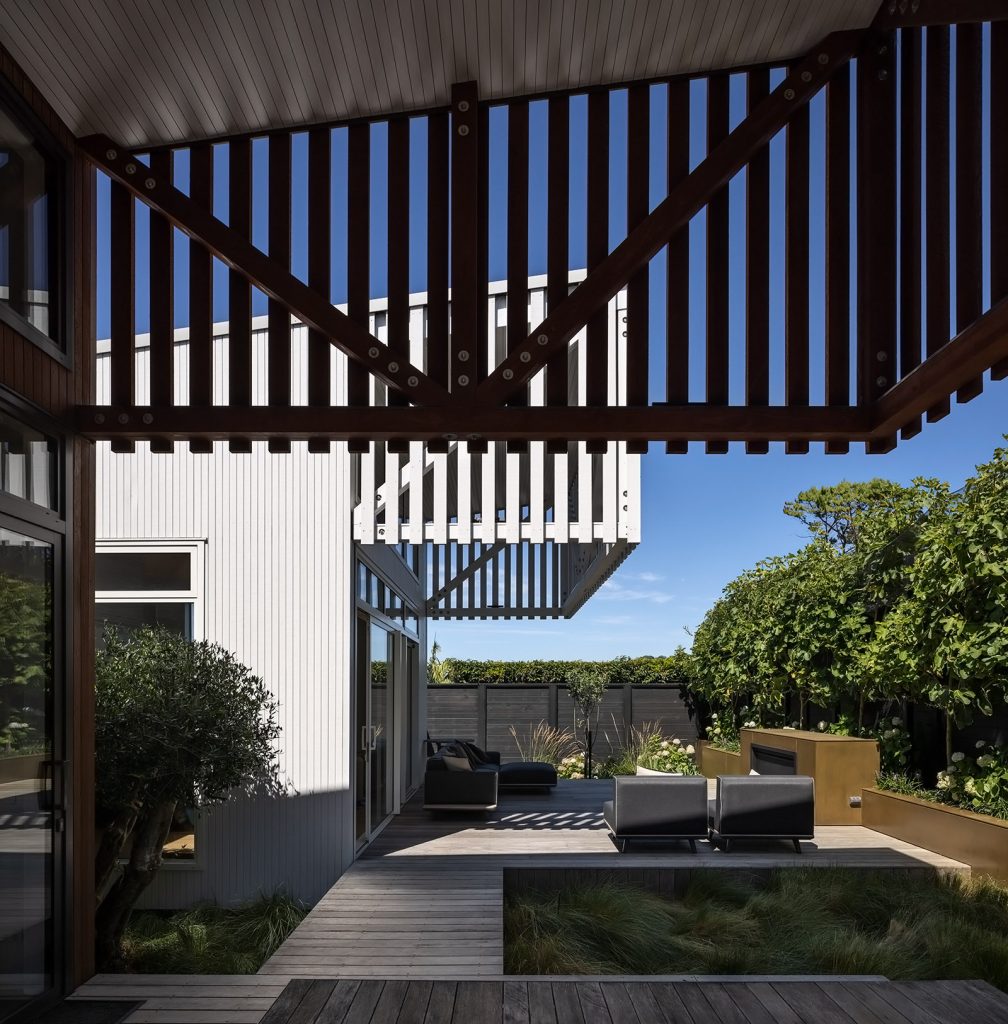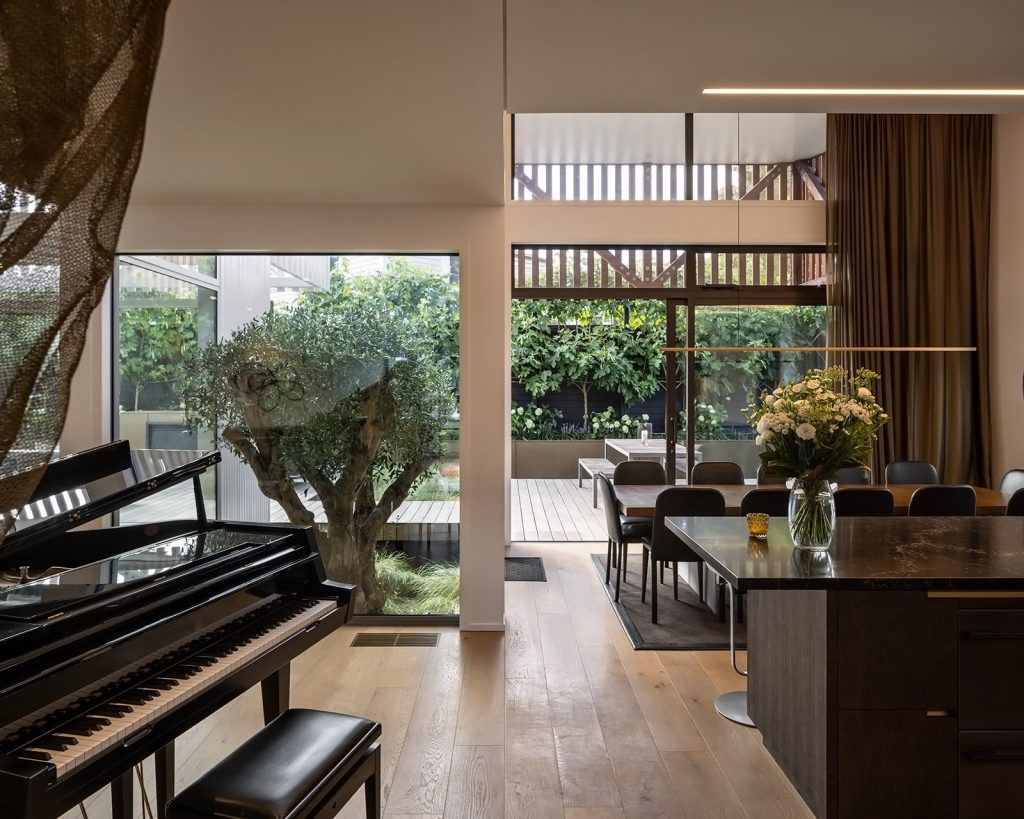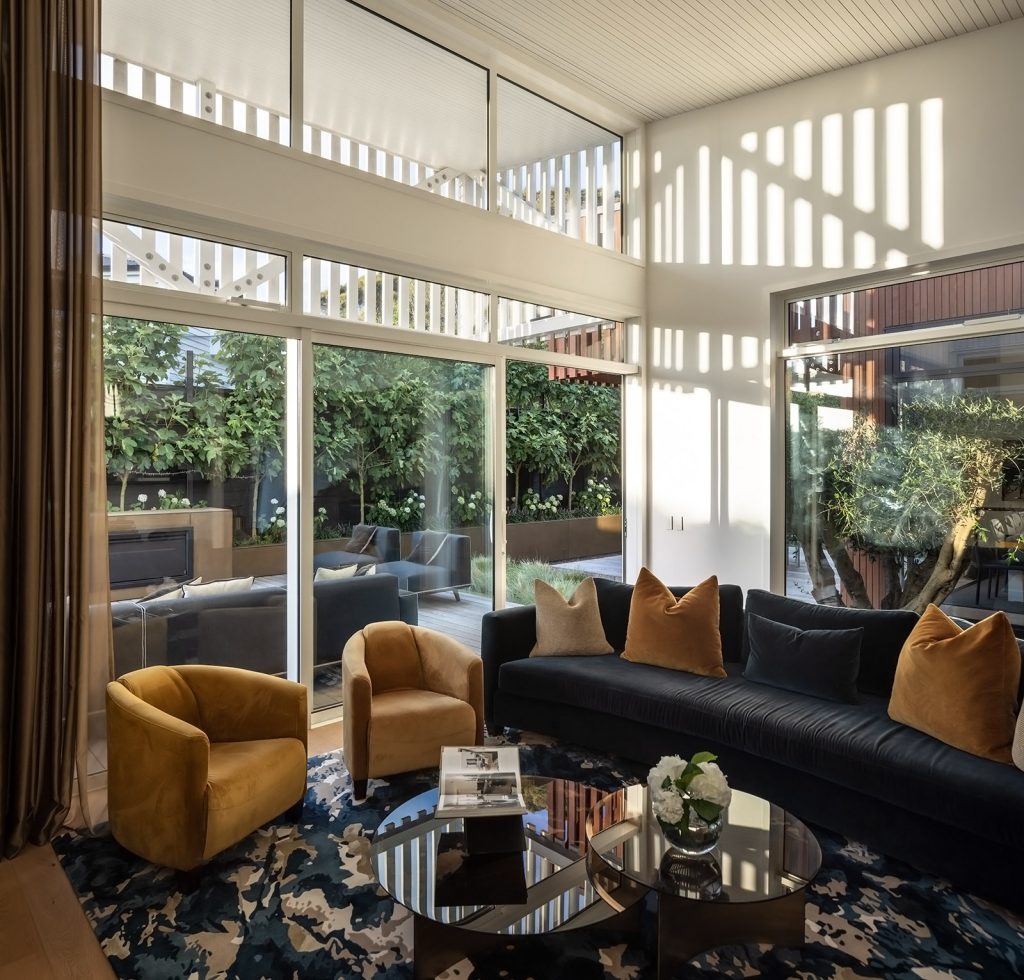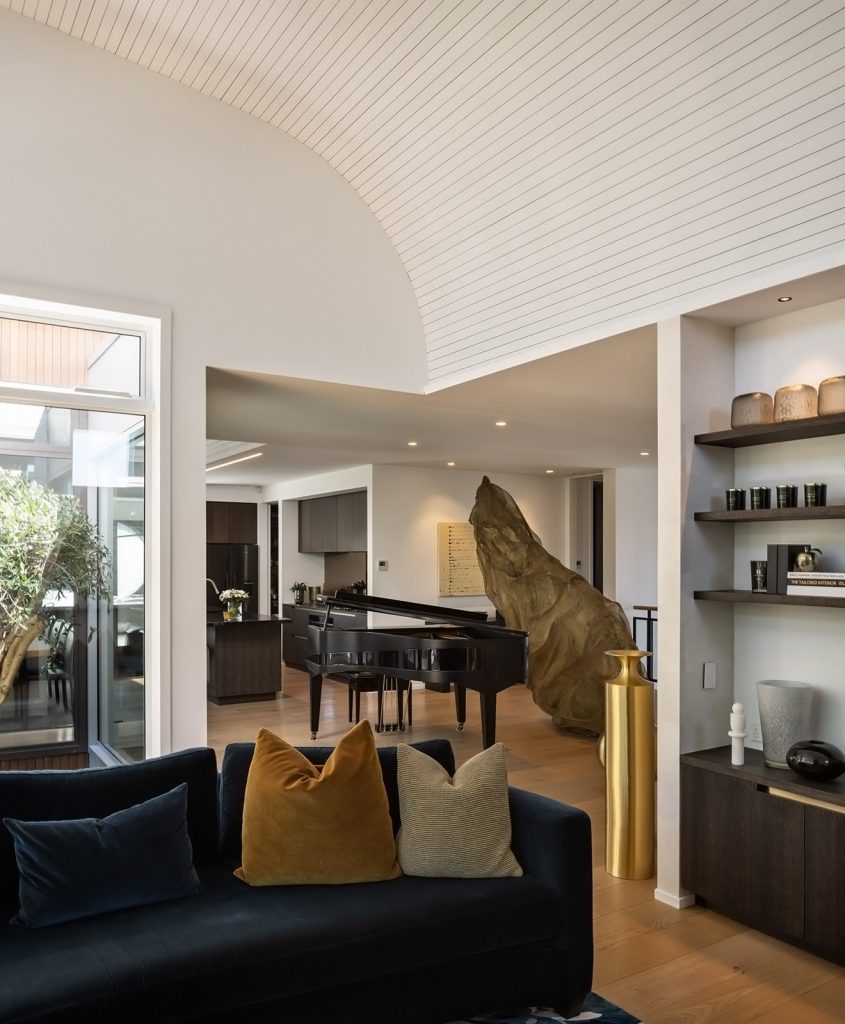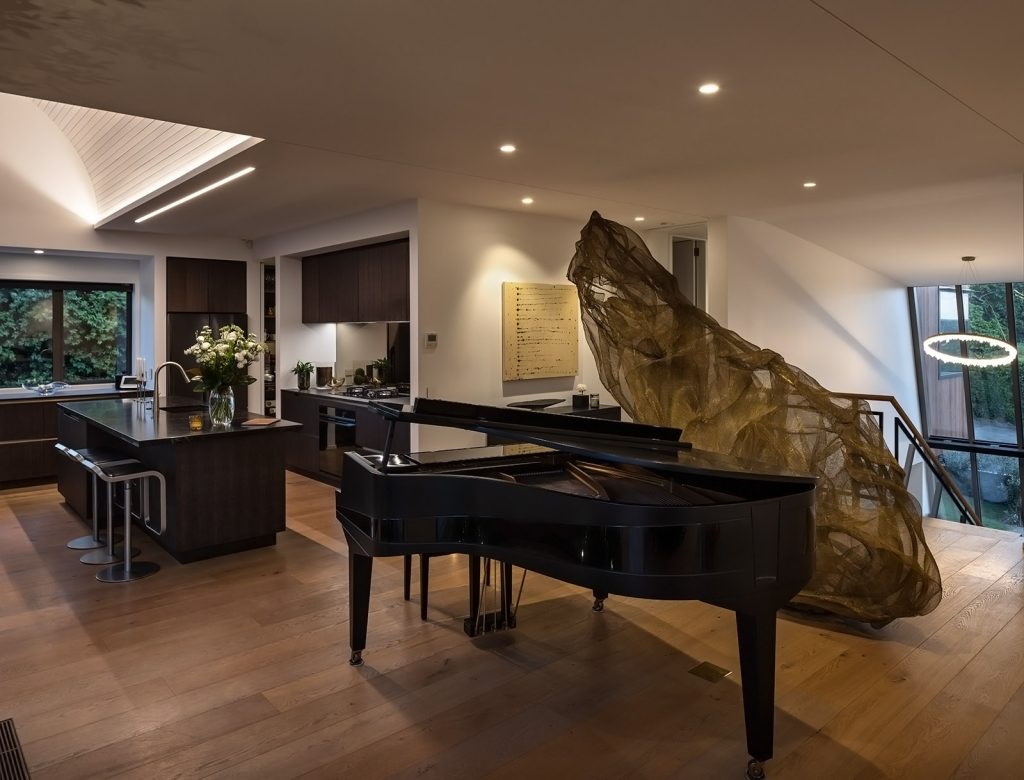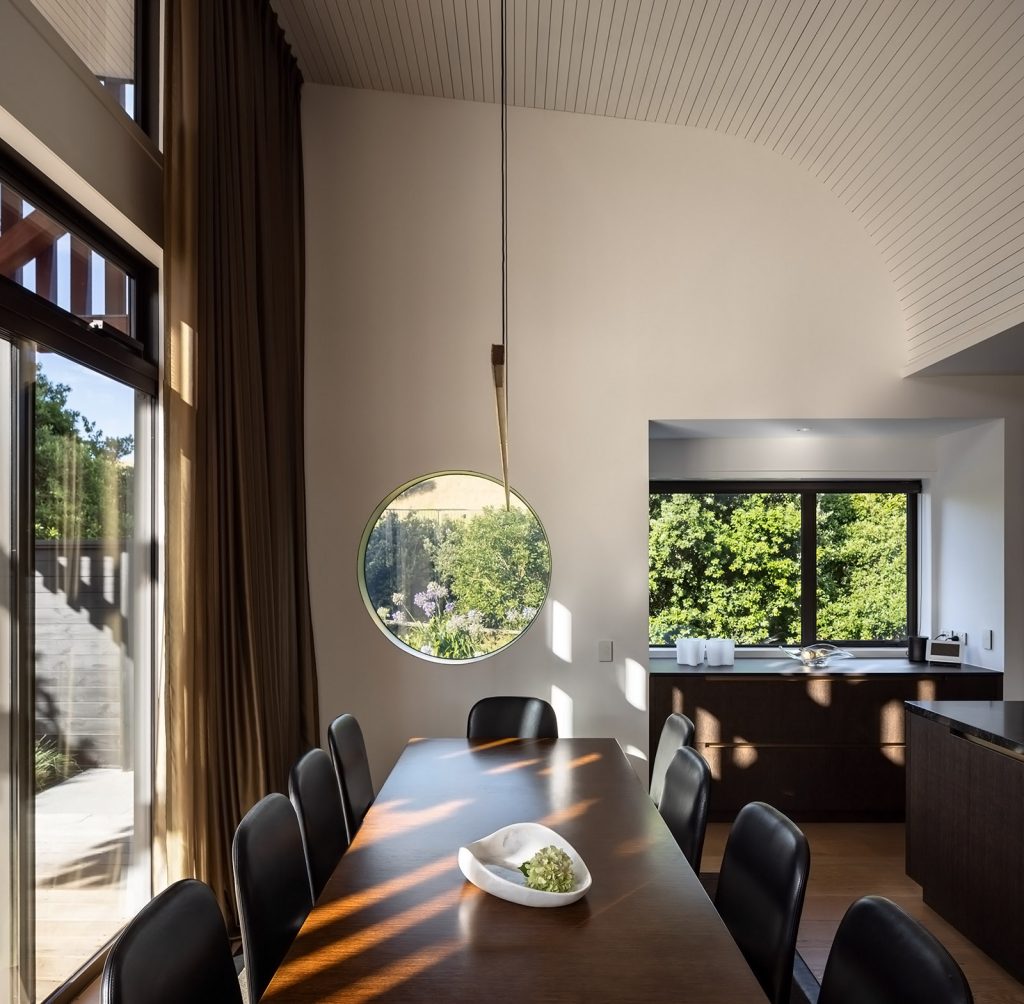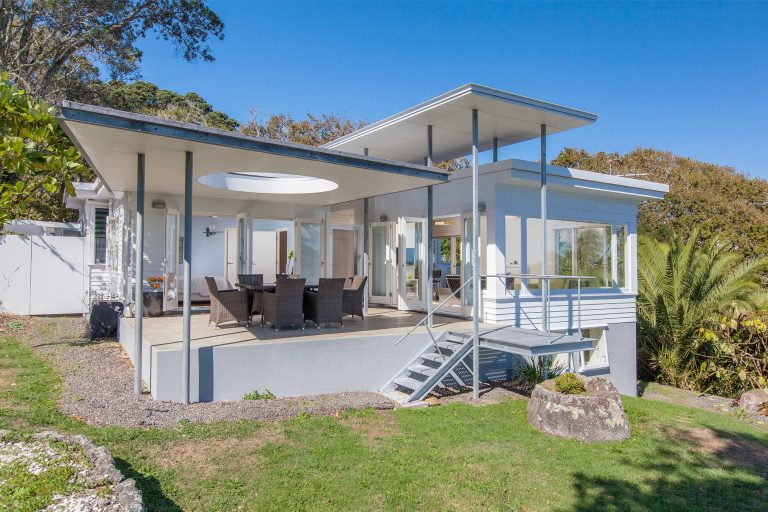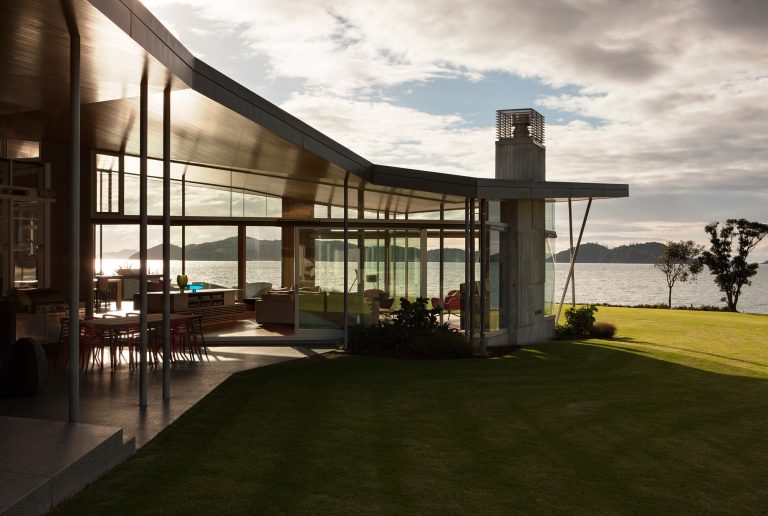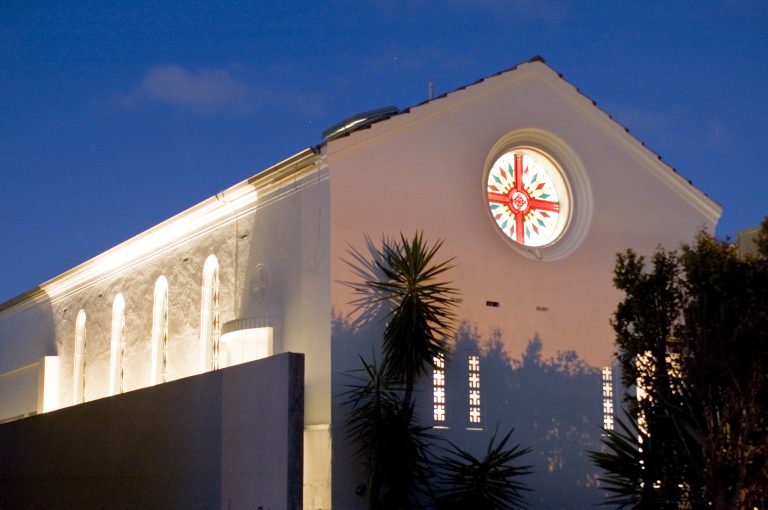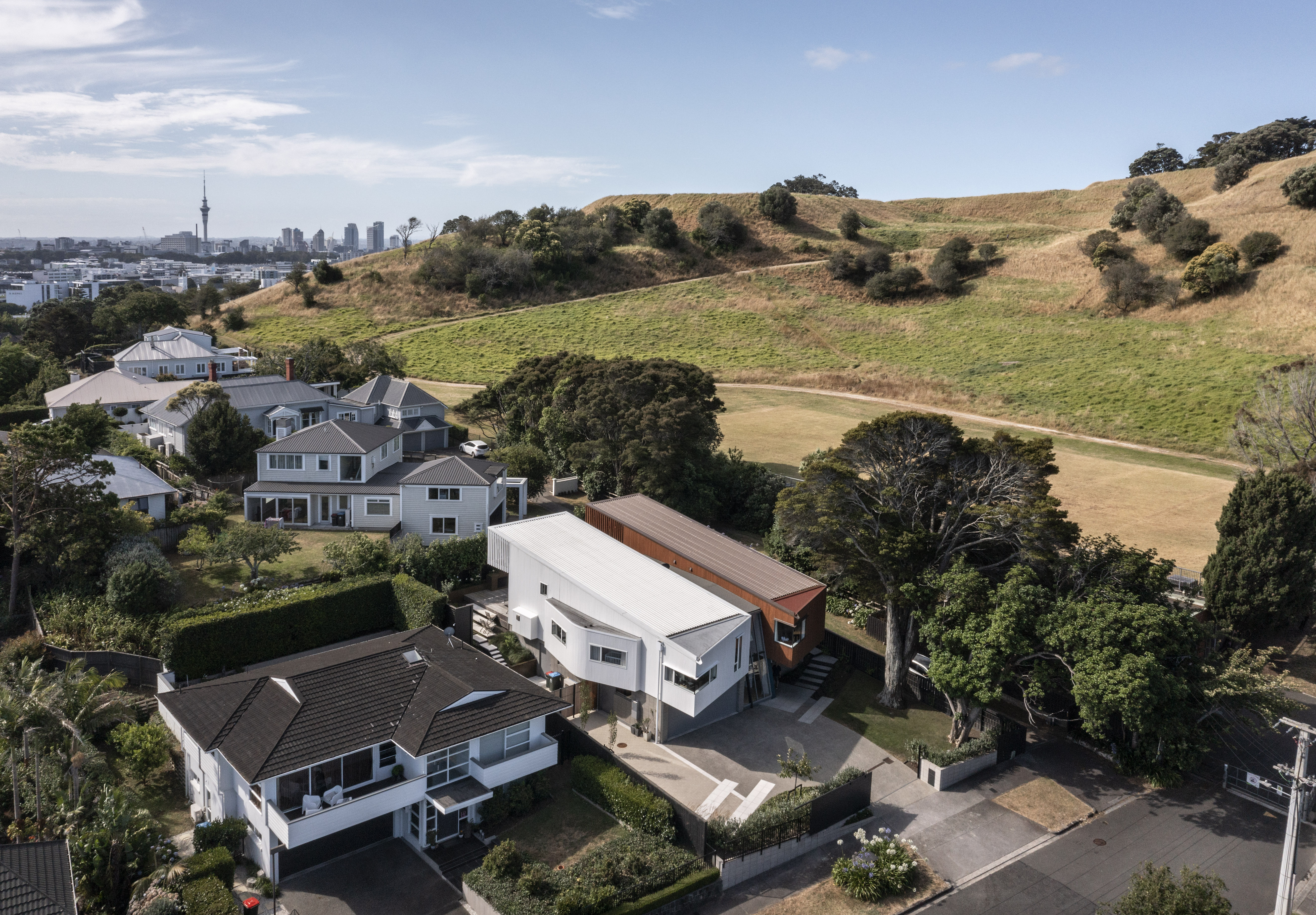
Ōhinerau
The house was conceived as two individual but congruent rectilinear forms, linked by a glazed circulation area, separated for privacy but coming together in the living areas for an extended family.
RESIDENTIAL
-
PROJECT
Ōhinerau
-
LOCATION
Mount Hobson, Auckland
-
STATUS
Completed
-
AWARDS
NZ Institute of Architects, Auckland Architecture Award, Housing
The house was conceived as two individual but congruent rectilinear forms, linked by a glazed circulation area, separated for privacy but coming together in the living areas for an extended family.
The pavilions rise to the north-west private side of the site with exposed trusses extending over the terraces, adding drama to the outdoor areas. Timber battened ceilings over living areas of each pavilion are sculpted to follow the rising roof, flowing out to the exterior trussed roofs with concealed lighting for night-time drama.
On the banks of Ōhinerau Mount Hobson the house is fortunate to have the maunga as a stunning backdrop. Views over the reserve and mountain provide a setting for an almost rural landscape in this urban environment.
The land gently contours to the north with the private outdoor areas enjoying all day sun. The new building located over the existing house footprint is accessed from the road frontage on the south-east side framed by mature Totara and Puriri trees.
An extensive alteration to an existing hip roofed house, the planning was constrained by the footprint of the previous house. A reinterpretation of the foundation layout led to the concept of two adjacent forms.
Cedar vertical cladding contrasting with white painted cladding is used to heighten the differences between the pavilions, following through with related colours for the aluminium joinery, metal and membrane roofing.
A stair of oak timber treads supported on a black steel frame and balustrade leads from the entry and lower level to access the main living level. The palette of natural timbers and natural light creates a warm and welcoming interior.
A sculptural screen designed by Pete Bossley was developed in collaboration with model maker Andrew Turney. Fabricated in brass mesh, the sculpture partially screens the piano hall in the light-filled space between the pavilions, animated by natural and artificial lighting to have different qualities at different times of the day.
